-
EXECUTIVE SUMMARY
-
\r\n
-
Market Overview
-
\r\n
-
Key Findings
-
\r\n
-
Market Segmentation
-
\r\n
-
Competitive Landscape
-
\r\n
-
Challenges and Opportunities
-
\r\n
-
Future Outlook
-
\r\n
-
MARKET INTRODUCTION
-
\r\n
-
Definition
-
\r\n
-
Scope of the study
- Research Objective
- Assumption
- Limitations
-
\r\n
-
\r\n
-
\r\n
-
\r\n
-
RESEARCH METHODOLOGY
-
\r\n
-
Overview
-
\r\n
-
Data Mining
-
\r\n
-
Secondary Research
-
\r\n
-
Primary Research
- Primary Interviews and Information Gathering Process
- Breakdown of Primary Respondents
-
\r\n
-
\r\n
-
\r\n
-
Forecasting Model
-
\r\n
-
Market Size Estimation
- Bottom-Up Approach
- Top-Down Approach
-
\r\n
-
\r\n
-
\r\n
-
Data Triangulation
-
\r\n
-
Validation
-
\r\n
-
MARKET DYNAMICS
-
\r\n
-
Overview
-
\r\n
-
Drivers
-
\r\n
-
Restraints
-
\r\n
-
Opportunities
-
\r\n
-
MARKET FACTOR ANALYSIS
-
\r\n
-
Value chain Analysis
-
\r\n
-
Porter's Five Forces Analysis
- Bargaining Power of Suppliers
- Bargaining Power of Buyers
- Threat of New Entrants
- Threat of Substitutes
- Intensity of Rivalry
-
\r\n
-
\r\n
-
\r\n
-
\r\n
-
\r\n
-
\r\n
-
COVID-19 Impact Analysis
- Market Impact Analysis
- Regional Impact
- Opportunity and Threat Analysis
-
\r\n
-
\r\n
-
\r\n
-
\r\n
-
HALAL FOODS BEVERAGES MARKET, BY PRODUCT TYPE (USD BILLION)
-
\r\n
-
Meat
-
\r\n
-
Dairy
-
\r\n
-
Cereals
-
\r\n
-
Snacks
-
\r\n
-
Beverages
-
\r\n
-
HALAL FOODS BEVERAGES MARKET, BY PURCHASING CHANNEL (USD BILLION)
-
\r\n
-
Online
-
\r\n
-
Supermarkets
-
\r\n
-
Convenience Stores
-
\r\n
-
Specialty Stores
-
\r\n
-
HALAL FOODS BEVERAGES MARKET, BY SHELF LIFE (USD BILLION)
-
\r\n
-
Perishable
-
\r\n
-
Non-Perishable
-
\r\n
-
Frozen
-
\r\n
-
Chilled
-
\r\n
-
HALAL FOODS BEVERAGES MARKET, BY END USE (USD BILLION)
-
\r\n
-
Residential
-
\r\n
-
Commercial
-
\r\n
-
Institutional
-
\r\n
-
HALAL FOODS BEVERAGES MARKET, BY REGIONAL (USD BILLION)
-
\r\n
-
North America
- US
- Canada
-
\r\n
-
\r\n
-
\r\n
-
Europe
- Germany
- UK
- France
- Russia
- Italy
- Spain
- Rest of Europe
-
\r\n
-
\r\n
-
\r\n
-
\r\n
-
\r\n
-
\r\n
-
\r\n
-
\r\n
-
APAC
- China
- India
- Japan
- South Korea
- Malaysia
- Thailand
- Indonesia
- Rest of APAC
-
\r\n
-
\r\n
-
\r\n
-
\r\n
-
\r\n
-
\r\n
-
\r\n
-
\r\n
-
\r\n
-
South America
- Brazil
- Mexico
- Argentina
- Rest of South America
-
\r\n
-
\r\n
-
\r\n
-
\r\n
-
\r\n
-
MEA
- GCC Countries
- South Africa
- Rest of MEA
-
\r\n
-
\r\n
-
\r\n
-
\r\n
-
COMPETITIVE LANDSCAPE
-
\r\n
-
Overview
-
\r\n
-
Competitive Analysis
-
\r\n
-
Market share Analysis
-
\r\n
-
Major Growth Strategy in the Halal Foods Beverages Market
-
\r\n
-
Competitive Benchmarking
-
\r\n
-
Leading Players in Terms of Number of Developments in the Halal Foods Beverages Market
-
\r\n
-
Key developments and growth strategies
- New Product Launch/Service Deployment
- Merger Acquisitions
- Joint Ventures
-
\r\n
-
\r\n
-
\r\n
-
\r\n
-
Major Players Financial Matrix
- Sales and Operating Income
- Major Players RD Expenditure. 2023
-
\r\n
-
\r\n
-
\r\n
-
COMPANY PROFILES
-
\r\n
-
Danone
- Financial Overview
- Products Offered
- Key Developments
- SWOT Analysis
- Key Strategies
-
\r\n
-
\r\n
-
\r\n
-
\r\n
-
\r\n
-
\r\n
-
Hain Celestial
- Financial Overview
- Products Offered
- Key Developments
- SWOT Analysis
- Key Strategies
-
\r\n
-
\r\n
-
\r\n
-
\r\n
-
\r\n
-
\r\n
-
Sadia
- Financial Overview
- Products Offered
- Key Developments
- SWOT Analysis
- Key Strategies
-
\r\n
-
\r\n
-
\r\n
-
\r\n
-
\r\n
-
\r\n
-
Midamar
- Financial Overview
- Products Offered
- Key Developments
- SWOT Analysis
- Key Strategies
-
\r\n
-
\r\n
-
\r\n
-
\r\n
-
\r\n
-
\r\n
-
Cargill
- Financial Overview
- Products Offered
- Key Developments
- SWOT Analysis
- Key Strategies
-
\r\n
-
\r\n
-
\r\n
-
\r\n
-
\r\n
-
\r\n
-
BRF
- Financial Overview
- Products Offered
- Key Developments
- SWOT Analysis
- Key Strategies
-
\r\n
-
\r\n
-
\r\n
-
\r\n
-
\r\n
-
\r\n
-
Saffron Road
- Financial Overview
- Products Offered
- Key Developments
- SWOT Analysis
- Key Strategies
-
\r\n
-
\r\n
-
\r\n
-
\r\n
-
\r\n
-
\r\n
-
Patanjali
- Financial Overview
- Products Offered
- Key Developments
- SWOT Analysis
- Key Strategies
-
\r\n
-
\r\n
-
\r\n
-
\r\n
-
\r\n
-
\r\n
-
Nestle
- Financial Overview
- Products Offered
- Key Developments
- SWOT Analysis
- Key Strategies
-
\r\n
-
\r\n
-
\r\n
-
\r\n
-
\r\n
-
\r\n
-
Toufood
- Financial Overview
- Products Offered
- Key Developments
- SWOT Analysis
- Key Strategies
-
\r\n
-
\r\n
-
\r\n
-
\r\n
-
\r\n
-
\r\n
-
Yoplait
- Financial Overview
- Products Offered
- Key Developments
- SWOT Analysis
- Key Strategies
-
\r\n
-
\r\n
-
\r\n
-
\r\n
-
\r\n
-
\r\n
-
Unilever
- Financial Overview
- Products Offered
- Key Developments
- SWOT Analysis
- Key Strategies
-
\r\n
-
\r\n
-
\r\n
-
\r\n
-
\r\n
-
\r\n
-
Pezza
- Financial Overview
- Products Offered
- Key Developments
- SWOT Analysis
- Key Strategies
-
\r\n
-
\r\n
-
\r\n
-
\r\n
-
\r\n
-
\r\n
-
FrieslandCampina
- Financial Overview
- Products Offered
- Key Developments
- SWOT Analysis
- Key Strategies
-
\r\n
-
\r\n
-
\r\n
-
\r\n
-
\r\n
-
\r\n
-
Almarai
- Financial Overview
- Products Offered
- Key Developments
- SWOT Analysis
- Key Strategies
-
\r\n
-
\r\n
-
\r\n
-
\r\n
-
\r\n
-
\r\n
-
APPENDIX
-
\r\n
-
References
-
\r\n
-
Related Reports
-
\r\n
-
LIST OF TABLES
-
\r\n
-
LIST OF ASSUMPTIONS
-
\r\n
-
NORTH AMERICA HALAL FOODS & BEVERAGES MARKET SIZE ESTIMATES & FORECAST, BY PRODUCT TYPE, 2019-2032 (USD BILLIONS)
-
\r\n
-
NORTH AMERICA HALAL FOODS & BEVERAGES MARKET SIZE ESTIMATES & FORECAST, BY PURCHASING CHANNEL, 2019-2032 (USD BILLIONS)
-
\r\n
-
NORTH AMERICA HALAL FOODS & BEVERAGES MARKET SIZE ESTIMATES & FORECAST, BY SHELF LIFE, 2019-2032 (USD BILLIONS)
-
\r\n
-
NORTH AMERICA HALAL FOODS & BEVERAGES MARKET SIZE ESTIMATES & FORECAST, BY END USE, 2019-2032 (USD BILLIONS)
-
\r\n
-
NORTH AMERICA HALAL FOODS & BEVERAGES MARKET SIZE ESTIMATES & FORECAST, BY REGIONAL, 2019-2032 (USD BILLIONS)
-
\r\n
-
US HALAL FOODS & BEVERAGES MARKET SIZE ESTIMATES & FORECAST, BY PRODUCT TYPE, 2019-2032 (USD BILLIONS)
-
\r\n
-
US HALAL FOODS & BEVERAGES MARKET SIZE ESTIMATES & FORECAST, BY PURCHASING CHANNEL, 2019-2032 (USD BILLIONS)
-
\r\n
-
US HALAL FOODS & BEVERAGES MARKET SIZE ESTIMATES & FORECAST, BY SHELF LIFE, 2019-2032 (USD BILLIONS)
-
\r\n
-
US HALAL FOODS & BEVERAGES MARKET SIZE ESTIMATES & FORECAST, BY END USE, 2019-2032 (USD BILLIONS)
-
\r\n
-
US HALAL FOODS & BEVERAGES MARKET SIZE ESTIMATES & FORECAST, BY REGIONAL, 2019-2032 (USD BILLIONS)
-
\r\n
-
CANADA HALAL FOODS & BEVERAGES MARKET SIZE ESTIMATES & FORECAST, BY PRODUCT TYPE, 2019-2032 (USD BILLIONS)
-
\r\n
-
CANADA HALAL FOODS & BEVERAGES MARKET SIZE ESTIMATES & FORECAST, BY PURCHASING CHANNEL, 2019-2032 (USD BILLIONS)
-
\r\n
-
CANADA HALAL FOODS & BEVERAGES MARKET SIZE ESTIMATES & FORECAST, BY SHELF LIFE, 2019-2032 (USD BILLIONS)
-
\r\n
-
CANADA HALAL FOODS & BEVERAGES MARKET SIZE ESTIMATES & FORECAST, BY END USE, 2019-2032 (USD BILLIONS)
-
\r\n
-
CANADA HALAL FOODS & BEVERAGES MARKET SIZE ESTIMATES & FORECAST, BY REGIONAL, 2019-2032 (USD BILLIONS)
-
\r\n
-
EUROPE HALAL FOODS & BEVERAGES MARKET SIZE ESTIMATES & FORECAST, BY PRODUCT TYPE, 2019-2032 (USD BILLIONS)
-
\r\n
-
EUROPE HALAL FOODS & BEVERAGES MARKET SIZE ESTIMATES & FORECAST, BY PURCHASING CHANNEL, 2019-2032 (USD BILLIONS)
-
\r\n
-
EUROPE HALAL FOODS & BEVERAGES MARKET SIZE ESTIMATES & FORECAST, BY SHELF LIFE, 2019-2032 (USD BILLIONS)
-
\r\n
-
EUROPE HALAL FOODS & BEVERAGES MARKET SIZE ESTIMATES & FORECAST, BY END USE, 2019-2032 (USD BILLIONS)
-
\r\n
-
EUROPE HALAL FOODS & BEVERAGES MARKET SIZE ESTIMATES & FORECAST, BY REGIONAL, 2019-2032 (USD BILLIONS)
-
\r\n
-
GERMANY HALAL FOODS & BEVERAGES MARKET SIZE ESTIMATES & FORECAST, BY PRODUCT TYPE, 2019-2032 (USD BILLIONS)
-
\r\n
-
GERMANY HALAL FOODS & BEVERAGES MARKET SIZE ESTIMATES & FORECAST, BY PURCHASING CHANNEL, 2019-2032 (USD BILLIONS)
-
\r\n
-
GERMANY HALAL FOODS & BEVERAGES MARKET SIZE ESTIMATES & FORECAST, BY SHELF LIFE, 2019-2032 (USD BILLIONS)
-
\r\n
-
GERMANY HALAL FOODS & BEVERAGES MARKET SIZE ESTIMATES & FORECAST, BY END USE, 2019-2032 (USD BILLIONS)
-
\r\n
-
GERMANY HALAL FOODS & BEVERAGES MARKET SIZE ESTIMATES & FORECAST, BY REGIONAL, 2019-2032 (USD BILLIONS)
-
\r\n
-
UK HALAL FOODS & BEVERAGES MARKET SIZE ESTIMATES & FORECAST, BY PRODUCT TYPE, 2019-2032 (USD BILLIONS)
-
\r\n
-
UK HALAL FOODS & BEVERAGES MARKET SIZE ESTIMATES & FORECAST, BY PURCHASING CHANNEL, 2019-2032 (USD BILLIONS)
-
\r\n
-
UK HALAL FOODS & BEVERAGES MARKET SIZE ESTIMATES & FORECAST, BY SHELF LIFE, 2019-2032 (USD BILLIONS)
-
\r\n
-
UK HALAL FOODS & BEVERAGES MARKET SIZE ESTIMATES & FORECAST, BY END USE, 2019-2032 (USD BILLIONS)
-
\r\n
-
UK HALAL FOODS & BEVERAGES MARKET SIZE ESTIMATES & FORECAST, BY REGIONAL, 2019-2032 (USD BILLIONS)
-
\r\n
-
FRANCE HALAL FOODS & BEVERAGES MARKET SIZE ESTIMATES & FORECAST, BY PRODUCT TYPE, 2019-2032 (USD BILLIONS)
-
\r\n
-
FRANCE HALAL FOODS & BEVERAGES MARKET SIZE ESTIMATES & FORECAST, BY PURCHASING CHANNEL, 2019-2032 (USD BILLIONS)
-
\r\n
-
FRANCE HALAL FOODS & BEVERAGES MARKET SIZE ESTIMATES & FORECAST, BY SHELF LIFE, 2019-2032 (USD BILLIONS)
-
\r\n
-
FRANCE HALAL FOODS & BEVERAGES MARKET SIZE ESTIMATES & FORECAST, BY END USE, 2019-2032 (USD BILLIONS)
-
\r\n
-
FRANCE HALAL FOODS & BEVERAGES MARKET SIZE ESTIMATES & FORECAST, BY REGIONAL, 2019-2032 (USD BILLIONS)
-
\r\n
-
RUSSIA HALAL FOODS & BEVERAGES MARKET SIZE ESTIMATES & FORECAST, BY PRODUCT TYPE, 2019-2032 (USD BILLIONS)
-
\r\n
-
RUSSIA HALAL FOODS & BEVERAGES MARKET SIZE ESTIMATES & FORECAST, BY PURCHASING CHANNEL, 2019-2032 (USD BILLIONS)
-
\r\n
-
RUSSIA HALAL FOODS & BEVERAGES MARKET SIZE ESTIMATES & FORECAST, BY SHELF LIFE, 2019-2032 (USD BILLIONS)
-
\r\n
-
RUSSIA HALAL FOODS & BEVERAGES MARKET SIZE ESTIMATES & FORECAST, BY END USE, 2019-2032 (USD BILLIONS)
-
\r\n
-
RUSSIA HALAL FOODS & BEVERAGES MARKET SIZE ESTIMATES & FORECAST, BY REGIONAL, 2019-2032 (USD BILLIONS)
-
\r\n
-
ITALY HALAL FOODS & BEVERAGES MARKET SIZE ESTIMATES & FORECAST, BY PRODUCT TYPE, 2019-2032 (USD BILLIONS)
-
\r\n
-
ITALY HALAL FOODS & BEVERAGES MARKET SIZE ESTIMATES & FORECAST, BY PURCHASING CHANNEL, 2019-2032 (USD BILLIONS)
-
\r\n
-
ITALY HALAL FOODS & BEVERAGES MARKET SIZE ESTIMATES & FORECAST, BY SHELF LIFE, 2019-2032 (USD BILLIONS)
-
\r\n
-
ITALY HALAL FOODS & BEVERAGES MARKET SIZE ESTIMATES & FORECAST, BY END USE, 2019-2032 (USD BILLIONS)
-
\r\n
-
ITALY HALAL FOODS & BEVERAGES MARKET SIZE ESTIMATES & FORECAST, BY REGIONAL, 2019-2032 (USD BILLIONS)
-
\r\n
-
SPAIN HALAL FOODS & BEVERAGES MARKET SIZE ESTIMATES & FORECAST, BY PRODUCT TYPE, 2019-2032 (USD BILLIONS)
-
\r\n
-
SPAIN HALAL FOODS & BEVERAGES MARKET SIZE ESTIMATES & FORECAST, BY PURCHASING CHANNEL, 2019-2032 (USD BILLIONS)
-
\r\n
-
SPAIN HALAL FOODS & BEVERAGES MARKET SIZE ESTIMATES & FORECAST, BY SHELF LIFE, 2019-2032 (USD BILLIONS)
-
\r\n
-
SPAIN HALAL FOODS & BEVERAGES MARKET SIZE ESTIMATES & FORECAST, BY END USE, 2019-2032 (USD BILLIONS)
-
\r\n
-
SPAIN HALAL FOODS & BEVERAGES MARKET SIZE ESTIMATES & FORECAST, BY REGIONAL, 2019-2032 (USD BILLIONS)
-
\r\n
-
REST OF EUROPE HALAL FOODS & BEVERAGES MARKET SIZE ESTIMATES & FORECAST, BY PRODUCT TYPE, 2019-2032 (USD BILLIONS)
-
\r\n
-
REST OF EUROPE HALAL FOODS & BEVERAGES MARKET SIZE ESTIMATES & FORECAST, BY PURCHASING CHANNEL, 2019-2032 (USD BILLIONS)
-
\r\n
-
REST OF EUROPE HALAL FOODS & BEVERAGES MARKET SIZE ESTIMATES & FORECAST, BY SHELF LIFE, 2019-2032 (USD BILLIONS)
-
\r\n
-
REST OF EUROPE HALAL FOODS & BEVERAGES MARKET SIZE ESTIMATES & FORECAST, BY END USE, 2019-2032 (USD BILLIONS)
-
\r\n
-
REST OF EUROPE HALAL FOODS & BEVERAGES MARKET SIZE ESTIMATES & FORECAST, BY REGIONAL, 2019-2032 (USD BILLIONS)
-
\r\n
-
APAC HALAL FOODS & BEVERAGES MARKET SIZE ESTIMATES & FORECAST, BY PRODUCT TYPE, 2019-2032 (USD BILLIONS)
-
\r\n
-
APAC HALAL FOODS & BEVERAGES MARKET SIZE ESTIMATES & FORECAST, BY PURCHASING CHANNEL, 2019-2032 (USD BILLIONS)
-
\r\n
-
APAC HALAL FOODS & BEVERAGES MARKET SIZE ESTIMATES & FORECAST, BY SHELF LIFE, 2019-2032 (USD BILLIONS)
-
\r\n
-
APAC HALAL FOODS & BEVERAGES MARKET SIZE ESTIMATES & FORECAST, BY END USE, 2019-2032 (USD BILLIONS)
-
\r\n
-
APAC HALAL FOODS & BEVERAGES MARKET SIZE ESTIMATES & FORECAST, BY REGIONAL, 2019-2032 (USD BILLIONS)
-
\r\n
-
CHINA HALAL FOODS & BEVERAGES MARKET SIZE ESTIMATES & FORECAST, BY PRODUCT TYPE, 2019-2032 (USD BILLIONS)
-
\r\n
-
CHINA HALAL FOODS & BEVERAGES MARKET SIZE ESTIMATES & FORECAST, BY PURCHASING CHANNEL, 2019-2032 (USD BILLIONS)
-
\r\n
-
CHINA HALAL FOODS & BEVERAGES MARKET SIZE ESTIMATES & FORECAST, BY SHELF LIFE, 2019-2032 (USD BILLIONS)
-
\r\n
-
CHINA HALAL FOODS & BEVERAGES MARKET SIZE ESTIMATES & FORECAST, BY END USE, 2019-2032 (USD BILLIONS)
-
\r\n
-
CHINA HALAL FOODS & BEVERAGES MARKET SIZE ESTIMATES & FORECAST, BY REGIONAL, 2019-2032 (USD BILLIONS)
-
\r\n
-
INDIA HALAL FOODS & BEVERAGES MARKET SIZE ESTIMATES & FORECAST, BY PRODUCT TYPE, 2019-2032 (USD BILLIONS)
-
\r\n
-
INDIA HALAL FOODS & BEVERAGES MARKET SIZE ESTIMATES & FORECAST, BY PURCHASING CHANNEL, 2019-2032 (USD BILLIONS)
-
\r\n
-
INDIA HALAL FOODS & BEVERAGES MARKET SIZE ESTIMATES & FORECAST, BY SHELF LIFE, 2019-2032 (USD BILLIONS)
-
\r\n
-
INDIA HALAL FOODS & BEVERAGES MARKET SIZE ESTIMATES & FORECAST, BY END USE, 2019-2032 (USD BILLIONS)
-
\r\n
-
INDIA HALAL FOODS & BEVERAGES MARKET SIZE ESTIMATES & FORECAST, BY REGIONAL, 2019-2032 (USD BILLIONS)
-
\r\n
-
JAPAN HALAL FOODS & BEVERAGES MARKET SIZE ESTIMATES & FORECAST, BY PRODUCT TYPE, 2019-2032 (USD BILLIONS)
-
\r\n
-
JAPAN HALAL FOODS & BEVERAGES MARKET SIZE ESTIMATES & FORECAST, BY PURCHASING CHANNEL, 2019-2032 (USD BILLIONS)
-
\r\n
-
JAPAN HALAL FOODS & BEVERAGES MARKET SIZE ESTIMATES & FORECAST, BY SHELF LIFE, 2019-2032 (USD BILLIONS)
-
\r\n
-
JAPAN HALAL FOODS & BEVERAGES MARKET SIZE ESTIMATES & FORECAST, BY END USE, 2019-2032 (USD BILLIONS)
-
\r\n
-
JAPAN HALAL FOODS & BEVERAGES MARKET SIZE ESTIMATES & FORECAST, BY REGIONAL, 2019-2032 (USD BILLIONS)
-
\r\n
-
SOUTH KOREA HALAL FOODS & BEVERAGES MARKET SIZE ESTIMATES & FORECAST, BY PRODUCT TYPE, 2019-2032 (USD BILLIONS)
-
\r\n
-
SOUTH KOREA HALAL FOODS & BEVERAGES MARKET SIZE ESTIMATES & FORECAST, BY PURCHASING CHANNEL, 2019-2032 (USD BILLIONS)
-
\r\n
-
SOUTH KOREA HALAL FOODS & BEVERAGES MARKET SIZE ESTIMATES & FORECAST, BY SHELF LIFE, 2019-2032 (USD BILLIONS)
-
\r\n
-
SOUTH KOREA HALAL FOODS & BEVERAGES MARKET SIZE ESTIMATES & FORECAST, BY END USE, 2019-2032 (USD BILLIONS)
-
\r\n
-
SOUTH KOREA HALAL FOODS & BEVERAGES MARKET SIZE ESTIMATES & FORECAST, BY REGIONAL, 2019-2032 (USD BILLIONS)
-
\r\n
-
MALAYSIA HALAL FOODS & BEVERAGES MARKET SIZE ESTIMATES & FORECAST, BY PRODUCT TYPE, 2019-2032 (USD BILLIONS)
-
\r\n
-
MALAYSIA HALAL FOODS & BEVERAGES MARKET SIZE ESTIMATES & FORECAST, BY PURCHASING CHANNEL, 2019-2032 (USD BILLIONS)
-
\r\n
-
MALAYSIA HALAL FOODS & BEVERAGES MARKET SIZE ESTIMATES & FORECAST, BY SHELF LIFE, 2019-2032 (USD BILLIONS)
-
\r\n
-
MALAYSIA HALAL FOODS & BEVERAGES MARKET SIZE ESTIMATES & FORECAST, BY END USE, 2019-2032 (USD BILLIONS)
-
\r\n
-
MALAYSIA HALAL FOODS & BEVERAGES MARKET SIZE ESTIMATES & FORECAST, BY REGIONAL, 2019-2032 (USD BILLIONS)
-
\r\n
-
THAILAND HALAL FOODS & BEVERAGES MARKET SIZE ESTIMATES & FORECAST, BY PRODUCT TYPE, 2019-2032 (USD BILLIONS)
-
\r\n
-
THAILAND HALAL FOODS & BEVERAGES MARKET SIZE ESTIMATES & FORECAST, BY PURCHASING CHANNEL, 2019-2032 (USD BILLIONS)
-
\r\n
-
THAILAND HALAL FOODS & BEVERAGES MARKET SIZE ESTIMATES & FORECAST, BY SHELF LIFE, 2019-2032 (USD BILLIONS)
-
\r\n
-
THAILAND HALAL FOODS & BEVERAGES MARKET SIZE ESTIMATES & FORECAST, BY END USE, 2019-2032 (USD BILLIONS)
-
\r\n
-
THAILAND HALAL FOODS & BEVERAGES MARKET SIZE ESTIMATES & FORECAST, BY REGIONAL, 2019-2032 (USD BILLIONS)
-
\r\n
-
INDONESIA HALAL FOODS & BEVERAGES MARKET SIZE ESTIMATES & FORECAST, BY PRODUCT TYPE, 2019-2032 (USD BILLIONS)
-
\r\n
-
INDONESIA HALAL FOODS & BEVERAGES MARKET SIZE ESTIMATES & FORECAST, BY PURCHASING CHANNEL, 2019-2032 (USD BILLIONS)
-
\r\n
-
INDONESIA HALAL FOODS & BEVERAGES MARKET SIZE ESTIMATES & FORECAST, BY SHELF LIFE, 2019-2032 (USD BILLIONS)
-
\r\n
-
INDONESIA HALAL FOODS & BEVERAGES MARKET SIZE ESTIMATES & FORECAST, BY END USE, 2019-2032 (USD BILLIONS)
-
\r\n
-
INDONESIA HALAL FOODS & BEVERAGES MARKET SIZE ESTIMATES & FORECAST, BY REGIONAL, 2019-2032 (USD BILLIONS)
-
\r\n
-
REST OF APAC HALAL FOODS & BEVERAGES MARKET SIZE ESTIMATES & FORECAST, BY PRODUCT TYPE, 2019-2032 (USD BILLIONS)
-
\r\n
-
REST OF APAC HALAL FOODS & BEVERAGES MARKET SIZE ESTIMATES & FORECAST, BY PURCHASING CHANNEL, 2019-2032 (USD BILLIONS)
-
\r\n
-
REST OF APAC HALAL FOODS & BEVERAGES MARKET SIZE ESTIMATES & FORECAST, BY SHELF LIFE, 2019-2032 (USD BILLIONS)
-
\r\n
-
REST OF APAC HALAL FOODS & BEVERAGES MARKET SIZE ESTIMATES & FORECAST, BY END USE, 2019-2032 (USD BILLIONS)
-
\r\n
-
REST OF APAC HALAL FOODS & BEVERAGES MARKET SIZE ESTIMATES & FORECAST, BY REGIONAL, 2019-2032 (USD BILLIONS)
-
\r\n
-
SOUTH AMERICA HALAL FOODS & BEVERAGES MARKET SIZE ESTIMATES & FORECAST, BY PRODUCT TYPE, 2019-2032 (USD BILLIONS)
-
\r\n
-
SOUTH AMERICA HALAL FOODS & BEVERAGES MARKET SIZE ESTIMATES & FORECAST, BY PURCHASING CHANNEL, 2019-2032 (USD BILLIONS)
-
\r\n
-
SOUTH AMERICA HALAL FOODS & BEVERAGES MARKET SIZE ESTIMATES & FORECAST, BY SHELF LIFE, 2019-2032 (USD BILLIONS)
-
\r\n
-
SOUTH AMERICA HALAL FOODS & BEVERAGES MARKET SIZE ESTIMATES & FORECAST, BY END USE, 2019-2032 (USD BILLIONS)
-
\r\n
-
SOUTH AMERICA HALAL FOODS & BEVERAGES MARKET SIZE ESTIMATES & FORECAST, BY REGIONAL, 2019-2032 (USD BILLIONS)
-
\r\n
-
BRAZIL HALAL FOODS & BEVERAGES MARKET SIZE ESTIMATES & FORECAST, BY PRODUCT TYPE, 2019-2032 (USD BILLIONS)
-
\r\n
-
BRAZIL HALAL FOODS & BEVERAGES MARKET SIZE ESTIMATES & FORECAST, BY PURCHASING CHANNEL, 2019-2032 (USD BILLIONS)
-
\r\n
-
BRAZIL HALAL FOODS & BEVERAGES MARKET SIZE ESTIMATES & FORECAST, BY SHELF LIFE, 2019-2032 (USD BILLIONS)
-
\r\n
-
BRAZIL HALAL FOODS & BEVERAGES MARKET SIZE ESTIMATES & FORECAST, BY END USE, 2019-2032 (USD BILLIONS)
-
\r\n
-
BRAZIL HALAL FOODS & BEVERAGES MARKET SIZE ESTIMATES & FORECAST, BY REGIONAL, 2019-2032 (USD BILLIONS)
-
\r\n
-
MEXICO HALAL FOODS & BEVERAGES MARKET SIZE ESTIMATES & FORECAST, BY PRODUCT TYPE, 2019-2032 (USD BILLIONS)
-
\r\n
-
MEXICO HALAL FOODS & BEVERAGES MARKET SIZE ESTIMATES & FORECAST, BY PURCHASING CHANNEL, 2019-2032 (USD BILLIONS)
-
\r\n
-
MEXICO HALAL FOODS & BEVERAGES MARKET SIZE ESTIMATES & FORECAST, BY SHELF LIFE, 2019-2032 (USD BILLIONS)
-
\r\n
-
MEXICO HALAL FOODS & BEVERAGES MARKET SIZE ESTIMATES & FORECAST, BY END USE, 2019-2032 (USD BILLIONS)
-
\r\n
-
MEXICO HALAL FOODS & BEVERAGES MARKET SIZE ESTIMATES & FORECAST, BY REGIONAL, 2019-2032 (USD BILLIONS)
-
\r\n
-
ARGENTINA HALAL FOODS & BEVERAGES MARKET SIZE ESTIMATES & FORECAST, BY PRODUCT TYPE, 2019-2032 (USD BILLIONS)
-
\r\n
-
ARGENTINA HALAL FOODS & BEVERAGES MARKET SIZE ESTIMATES & FORECAST, BY PURCHASING CHANNEL, 2019-2032 (USD BILLIONS)
-
\r\n
-
ARGENTINA HALAL FOODS & BEVERAGES MARKET SIZE ESTIMATES & FORECAST, BY SHELF LIFE, 2019-2032 (USD BILLIONS)
-
\r\n
-
ARGENTINA HALAL FOODS & BEVERAGES MARKET SIZE ESTIMATES & FORECAST, BY END USE, 2019-2032 (USD BILLIONS)
-
\r\n
-
ARGENTINA HALAL FOODS & BEVERAGES MARKET SIZE ESTIMATES & FORECAST, BY REGIONAL, 2019-2032 (USD BILLIONS)
-
\r\n
-
REST OF SOUTH AMERICA HALAL FOODS & BEVERAGES MARKET SIZE ESTIMATES & FORECAST, BY PRODUCT TYPE, 2019-2032 (USD BILLIONS)
-
\r\n
-
REST OF SOUTH AMERICA HALAL FOODS & BEVERAGES MARKET SIZE ESTIMATES & FORECAST, BY PURCHASING CHANNEL, 2019-2032 (USD BILLIONS)
-
\r\n
-
REST OF SOUTH AMERICA HALAL FOODS & BEVERAGES MARKET SIZE ESTIMATES & FORECAST, BY SHELF LIFE, 2019-2032 (USD BILLIONS)
-
\r\n
-
REST OF SOUTH AMERICA HALAL FOODS & BEVERAGES MARKET SIZE ESTIMATES & FORECAST, BY END USE, 2019-2032 (USD BILLIONS)
-
\r\n
-
REST OF SOUTH AMERICA HALAL FOODS & BEVERAGES MARKET SIZE ESTIMATES & FORECAST, BY REGIONAL, 2019-2032 (USD BILLIONS)
-
\r\n
-
MEA HALAL FOODS & BEVERAGES MARKET SIZE ESTIMATES & FORECAST, BY PRODUCT TYPE, 2019-2032 (USD BILLIONS)
-
\r\n
-
MEA HALAL FOODS & BEVERAGES MARKET SIZE ESTIMATES & FORECAST, BY PURCHASING CHANNEL, 2019-2032 (USD BILLIONS)
-
\r\n
-
MEA HALAL FOODS & BEVERAGES MARKET SIZE ESTIMATES & FORECAST, BY SHELF LIFE, 2019-2032 (USD BILLIONS)
-
\r\n
-
MEA HALAL FOODS & BEVERAGES MARKET SIZE ESTIMATES & FORECAST, BY END USE, 2019-2032 (USD BILLIONS)
-
\r\n
-
MEA HALAL FOODS & BEVERAGES MARKET SIZE ESTIMATES & FORECAST, BY REGIONAL, 2019-2032 (USD BILLIONS)
-
\r\n
-
GCC COUNTRIES HALAL FOODS & BEVERAGES MARKET SIZE ESTIMATES & FORECAST, BY PRODUCT TYPE, 2019-2032 (USD BILLIONS)
-
\r\n
-
GCC COUNTRIES HALAL FOODS & BEVERAGES MARKET SIZE ESTIMATES & FORECAST, BY PURCHASING CHANNEL, 2019-2032 (USD BILLIONS)
-
\r\n
-
GCC COUNTRIES HALAL FOODS & BEVERAGES MARKET SIZE ESTIMATES & FORECAST, BY SHELF LIFE, 2019-2032 (USD BILLIONS)
-
\r\n
-
GCC COUNTRIES HALAL FOODS & BEVERAGES MARKET SIZE ESTIMATES & FORECAST, BY END USE, 2019-2032 (USD BILLIONS)
-
\r\n
-
GCC COUNTRIES HALAL FOODS & BEVERAGES MARKET SIZE ESTIMATES & FORECAST, BY REGIONAL, 2019-2032 (USD BILLIONS)
-
\r\n
-
SOUTH AFRICA HALAL FOODS & BEVERAGES MARKET SIZE ESTIMATES & FORECAST, BY PRODUCT TYPE, 2019-2032 (USD BILLIONS)
-
\r\n
-
SOUTH AFRICA HALAL FOODS & BEVERAGES MARKET SIZE ESTIMATES & FORECAST, BY PURCHASING CHANNEL, 2019-2032 (USD BILLIONS)
-
\r\n
-
SOUTH AFRICA HALAL FOODS & BEVERAGES MARKET SIZE ESTIMATES & FORECAST, BY SHELF LIFE, 2019-2032 (USD BILLIONS)
-
\r\n
-
SOUTH AFRICA HALAL FOODS & BEVERAGES MARKET SIZE ESTIMATES & FORECAST, BY END USE, 2019-2032 (USD BILLIONS)
-
\r\n
-
SOUTH AFRICA HALAL FOODS & BEVERAGES MARKET SIZE ESTIMATES & FORECAST, BY REGIONAL, 2019-2032 (USD BILLIONS)
-
\r\n
-
REST OF MEA HALAL FOODS & BEVERAGES MARKET SIZE ESTIMATES & FORECAST, BY PRODUCT TYPE, 2019-2032 (USD BILLIONS)
-
\r\n
-
REST OF MEA HALAL FOODS & BEVERAGES MARKET SIZE ESTIMATES & FORECAST, BY PURCHASING CHANNEL, 2019-2032 (USD BILLIONS)
-
\r\n
-
REST OF MEA HALAL FOODS & BEVERAGES MARKET SIZE ESTIMATES & FORECAST, BY SHELF LIFE, 2019-2032 (USD BILLIONS)
-
\r\n
-
REST OF MEA HALAL FOODS & BEVERAGES MARKET SIZE ESTIMATES & FORECAST, BY END USE, 2019-2032 (USD BILLIONS)
-
\r\n
-
REST OF MEA HALAL FOODS & BEVERAGES MARKET SIZE ESTIMATES & FORECAST, BY REGIONAL, 2019-2032 (USD BILLIONS)
-
\r\n
-
PRODUCT LAUNCH/PRODUCT DEVELOPMENT/APPROVAL
-
\r\n
-
ACQUISITION/PARTNERSHIP
-
\r\n
-
LIST OF FIGURES
-
\r\n
-
MARKET SYNOPSIS
-
\r\n
-
NORTH AMERICA HALAL FOODS & BEVERAGES MARKET ANALYSIS
-
\r\n
-
US HALAL FOODS & BEVERAGES MARKET ANALYSIS BY PRODUCT TYPE
-
\r\n
-
US HALAL FOODS & BEVERAGES MARKET ANALYSIS BY PURCHASING CHANNEL
-
\r\n
-
US HALAL FOODS & BEVERAGES MARKET ANALYSIS BY SHELF LIFE
-
\r\n
-
US HALAL FOODS & BEVERAGES MARKET ANALYSIS BY END USE
-
\r\n
-
US HALAL FOODS & BEVERAGES MARKET ANALYSIS BY REGIONAL
-
\r\n
-
CANADA HALAL FOODS & BEVERAGES MARKET ANALYSIS BY PRODUCT TYPE
-
\r\n
-
CANADA HALAL FOODS & BEVERAGES MARKET ANALYSIS BY PURCHASING CHANNEL
-
\r\n
-
CANADA HALAL FOODS & BEVERAGES MARKET ANALYSIS BY SHELF LIFE
-
\r\n
-
CANADA HALAL FOODS & BEVERAGES MARKET ANALYSIS BY END USE
-
\r\n
-
CANADA HALAL FOODS & BEVERAGES MARKET ANALYSIS BY REGIONAL
-
\r\n
-
EUROPE HALAL FOODS & BEVERAGES MARKET ANALYSIS
-
\r\n
-
GERMANY HALAL FOODS & BEVERAGES MARKET ANALYSIS BY PRODUCT TYPE
-
\r\n
-
GERMANY HALAL FOODS & BEVERAGES MARKET ANALYSIS BY PURCHASING CHANNEL
-
\r\n
-
GERMANY HALAL FOODS & BEVERAGES MARKET ANALYSIS BY SHELF LIFE
-
\r\n
-
GERMANY HALAL FOODS & BEVERAGES MARKET ANALYSIS BY END USE
-
\r\n
-
GERMANY HALAL FOODS & BEVERAGES MARKET ANALYSIS BY REGIONAL
-
\r\n
-
UK HALAL FOODS & BEVERAGES MARKET ANALYSIS BY PRODUCT TYPE
-
\r\n
-
UK HALAL FOODS & BEVERAGES MARKET ANALYSIS BY PURCHASING CHANNEL
-
\r\n
-
UK HALAL FOODS & BEVERAGES MARKET ANALYSIS BY SHELF LIFE
-
\r\n
-
UK HALAL FOODS & BEVERAGES MARKET ANALYSIS BY END USE
-
\r\n
-
UK HALAL FOODS & BEVERAGES MARKET ANALYSIS BY REGIONAL
-
\r\n
-
FRANCE HALAL FOODS & BEVERAGES MARKET ANALYSIS BY PRODUCT TYPE
-
\r\n
-
FRANCE HALAL FOODS & BEVERAGES MARKET ANALYSIS BY PURCHASING CHANNEL
-
\r\n
-
FRANCE HALAL FOODS & BEVERAGES MARKET ANALYSIS BY SHELF LIFE
-
\r\n
-
FRANCE HALAL FOODS & BEVERAGES MARKET ANALYSIS BY END USE
-
\r\n
-
FRANCE HALAL FOODS & BEVERAGES MARKET ANALYSIS BY REGIONAL
-
\r\n
-
RUSSIA HALAL FOODS & BEVERAGES MARKET ANALYSIS BY PRODUCT TYPE
-
\r\n
-
RUSSIA HALAL FOODS & BEVERAGES MARKET ANALYSIS BY PURCHASING CHANNEL
-
\r\n
-
RUSSIA HALAL FOODS & BEVERAGES MARKET ANALYSIS BY SHELF LIFE
-
\r\n
-
RUSSIA HALAL FOODS & BEVERAGES MARKET ANALYSIS BY END USE
-
\r\n
-
RUSSIA HALAL FOODS & BEVERAGES MARKET ANALYSIS BY REGIONAL
-
\r\n
-
ITALY HALAL FOODS & BEVERAGES MARKET ANALYSIS BY PRODUCT TYPE
-
\r\n
-
ITALY HALAL FOODS & BEVERAGES MARKET ANALYSIS BY PURCHASING CHANNEL
-
\r\n
-
ITALY HALAL FOODS & BEVERAGES MARKET ANALYSIS BY SHELF LIFE
-
\r\n
-
ITALY HALAL FOODS & BEVERAGES MARKET ANALYSIS BY END USE
-
\r\n
-
ITALY HALAL FOODS & BEVERAGES MARKET ANALYSIS BY REGIONAL
-
\r\n
-
SPAIN HALAL FOODS & BEVERAGES MARKET ANALYSIS BY PRODUCT TYPE
-
\r\n
-
SPAIN HALAL FOODS & BEVERAGES MARKET ANALYSIS BY PURCHASING CHANNEL
-
\r\n
-
SPAIN HALAL FOODS & BEVERAGES MARKET ANALYSIS BY SHELF LIFE
-
\r\n
-
SPAIN HALAL FOODS & BEVERAGES MARKET ANALYSIS BY END USE
-
\r\n
-
SPAIN HALAL FOODS & BEVERAGES MARKET ANALYSIS BY REGIONAL
-
\r\n
-
REST OF EUROPE HALAL FOODS & BEVERAGES MARKET ANALYSIS BY PRODUCT TYPE
-
\r\n
-
REST OF EUROPE HALAL FOODS & BEVERAGES MARKET ANALYSIS BY PURCHASING CHANNEL
-
\r\n
-
REST OF EUROPE HALAL FOODS & BEVERAGES MARKET ANALYSIS BY SHELF LIFE
-
\r\n
-
REST OF EUROPE HALAL FOODS & BEVERAGES MARKET ANALYSIS BY END USE
-
\r\n
-
REST OF EUROPE HALAL FOODS & BEVERAGES MARKET ANALYSIS BY REGIONAL
-
\r\n
-
APAC HALAL FOODS & BEVERAGES MARKET ANALYSIS
-
\r\n
-
CHINA HALAL FOODS & BEVERAGES MARKET ANALYSIS BY PRODUCT TYPE
-
\r\n
-
CHINA HALAL FOODS & BEVERAGES MARKET ANALYSIS BY PURCHASING CHANNEL
-
\r\n
-
CHINA HALAL FOODS & BEVERAGES MARKET ANALYSIS BY SHELF LIFE
-
\r\n
-
CHINA HALAL FOODS & BEVERAGES MARKET ANALYSIS BY END USE
-
\r\n
-
CHINA HALAL FOODS & BEVERAGES MARKET ANALYSIS BY REGIONAL
-
\r\n
-
INDIA HALAL FOODS & BEVERAGES MARKET ANALYSIS BY PRODUCT TYPE
-
\r\n
-
INDIA HALAL FOODS & BEVERAGES MARKET ANALYSIS BY PURCHASING CHANNEL
-
\r\n
-
INDIA HALAL FOODS & BEVERAGES MARKET ANALYSIS BY SHELF LIFE
-
\r\n
-
INDIA HALAL FOODS & BEVERAGES MARKET ANALYSIS BY END USE
-
\r\n
-
INDIA HALAL FOODS & BEVERAGES MARKET ANALYSIS BY REGIONAL
-
\r\n
-
JAPAN HALAL FOODS & BEVERAGES MARKET ANALYSIS BY PRODUCT TYPE
-
\r\n
-
JAPAN HALAL FOODS & BEVERAGES MARKET ANALYSIS BY PURCHASING CHANNEL
-
\r\n
-
JAPAN HALAL FOODS & BEVERAGES MARKET ANALYSIS BY SHELF LIFE
-
\r\n
-
JAPAN HALAL FOODS & BEVERAGES MARKET ANALYSIS BY END USE
-
\r\n
-
JAPAN HALAL FOODS & BEVERAGES MARKET ANALYSIS BY REGIONAL
-
\r\n
-
SOUTH KOREA HALAL FOODS & BEVERAGES MARKET ANALYSIS BY PRODUCT TYPE
-
\r\n
-
SOUTH KOREA HALAL FOODS & BEVERAGES MARKET ANALYSIS BY PURCHASING CHANNEL
-
\r\n
-
SOUTH KOREA HALAL FOODS & BEVERAGES MARKET ANALYSIS BY SHELF LIFE
-
\r\n
-
SOUTH KOREA HALAL FOODS & BEVERAGES MARKET ANALYSIS BY END USE
-
\r\n
-
SOUTH KOREA HALAL FOODS & BEVERAGES MARKET ANALYSIS BY REGIONAL
-
\r\n
-
MALAYSIA HALAL FOODS & BEVERAGES MARKET ANALYSIS BY PRODUCT TYPE
-
\r\n
-
MALAYSIA HALAL FOODS & BEVERAGES MARKET ANALYSIS BY PURCHASING CHANNEL
-
\r\n
-
MALAYSIA HALAL FOODS & BEVERAGES MARKET ANALYSIS BY SHELF LIFE
-
\r\n
-
MALAYSIA HALAL FOODS & BEVERAGES MARKET ANALYSIS BY END USE
-
\r\n
-
MALAYSIA HALAL FOODS & BEVERAGES MARKET ANALYSIS BY REGIONAL
-
\r\n
-
THAILAND HALAL FOODS & BEVERAGES MARKET ANALYSIS BY PRODUCT TYPE
-
\r\n
-
THAILAND HALAL FOODS & BEVERAGES MARKET ANALYSIS BY PURCHASING CHANNEL
-
\r\n
-
THAILAND HALAL FOODS & BEVERAGES MARKET ANALYSIS BY SHELF LIFE
-
\r\n
-
THAILAND HALAL FOODS & BEVERAGES MARKET ANALYSIS BY END USE
-
\r\n
-
THAILAND HALAL FOODS & BEVERAGES MARKET ANALYSIS BY REGIONAL
-
\r\n
-
INDONESIA HALAL FOODS & BEVERAGES MARKET ANALYSIS BY PRODUCT TYPE
-
\r\n
-
INDONESIA HALAL FOODS & BEVERAGES MARKET ANALYSIS BY PURCHASING CHANNEL
-
\r\n
-
INDONESIA HALAL FOODS & BEVERAGES MARKET ANALYSIS BY SHELF LIFE
-
\r\n
-
INDONESIA HALAL FOODS & BEVERAGES MARKET ANALYSIS BY END USE
-
\r\n
-
INDONESIA HALAL FOODS & BEVERAGES MARKET ANALYSIS BY REGIONAL
-
\r\n
-
REST OF APAC HALAL FOODS & BEVERAGES MARKET ANALYSIS BY PRODUCT TYPE
-
\r\n
-
REST OF APAC HALAL FOODS & BEVERAGES MARKET ANALYSIS BY PURCHASING CHANNEL
-
\r\n
-
REST OF APAC HALAL FOODS & BEVERAGES MARKET ANALYSIS BY SHELF LIFE
-
\r\n
-
REST OF APAC HALAL FOODS & BEVERAGES MARKET ANALYSIS BY END USE
-
\r\n
-
REST OF APAC HALAL FOODS & BEVERAGES MARKET ANALYSIS BY REGIONAL
-
\r\n
-
SOUTH AMERICA HALAL FOODS & BEVERAGES MARKET ANALYSIS
-
\r\n
-
BRAZIL HALAL FOODS & BEVERAGES MARKET ANALYSIS BY PRODUCT TYPE
-
\r\n
-
BRAZIL HALAL FOODS & BEVERAGES MARKET ANALYSIS BY PURCHASING CHANNEL
-
\r\n
-
BRAZIL HALAL FOODS & BEVERAGES MARKET ANALYSIS BY SHELF LIFE
-
\r\n
-
BRAZIL HALAL FOODS & BEVERAGES MARKET ANALYSIS BY END USE
-
\r\n
-
BRAZIL HALAL FOODS & BEVERAGES MARKET ANALYSIS BY REGIONAL
-
\r\n
-
MEXICO HALAL FOODS & BEVERAGES MARKET ANALYSIS BY PRODUCT TYPE
-
\r\n
-
MEXICO HALAL FOODS & BEVERAGES MARKET ANALYSIS BY PURCHASING CHANNEL
-
\r\n
-
MEXICO HALAL FOODS & BEVERAGES MARKET ANALYSIS BY SHELF LIFE
-
\r\n
-
MEXICO HALAL FOODS & BEVERAGES MARKET ANALYSIS BY END USE
-
\r\n
-
MEXICO HALAL FOODS & BEVERAGES MARKET ANALYSIS BY REGIONAL
-
\r\n
-
ARGENTINA HALAL FOODS & BEVERAGES MARKET ANALYSIS BY PRODUCT TYPE
-
\r\n
-
ARGENTINA HALAL FOODS & BEVERAGES MARKET ANALYSIS BY PURCHASING CHANNEL
-
\r\n
-
ARGENTINA HALAL FOODS & BEVERAGES MARKET ANALYSIS BY SHELF LIFE
-
\r\n
-
ARGENTINA HALAL FOODS & BEVERAGES MARKET ANALYSIS BY END USE
-
\r\n
-
ARGENTINA HALAL FOODS & BEVERAGES MARKET ANALYSIS BY REGIONAL
-
\r\n
-
REST OF SOUTH AMERICA HALAL FOODS & BEVERAGES MARKET ANALYSIS BY PRODUCT TYPE
-
\r\n
-
REST OF SOUTH AMERICA HALAL FOODS & BEVERAGES MARKET ANALYSIS BY PURCHASING CHANNEL
-
\r\n
-
REST OF SOUTH AMERICA HALAL FOODS & BEVERAGES MARKET ANALYSIS BY SHELF LIFE
-
\r\n
-
REST OF SOUTH AMERICA HALAL FOODS & BEVERAGES MARKET ANALYSIS BY END USE
-
\r\n
-
REST OF SOUTH AMERICA HALAL FOODS & BEVERAGES MARKET ANALYSIS BY REGIONAL
-
\r\n
-
MEA HALAL FOODS & BEVERAGES MARKET ANALYSIS
-
\r\n
-
GCC COUNTRIES HALAL FOODS & BEVERAGES MARKET ANALYSIS BY PRODUCT TYPE
-
\r\n
-
GCC COUNTRIES HALAL FOODS & BEVERAGES MARKET ANALYSIS BY PURCHASING CHANNEL
-
\r\n
-
GCC COUNTRIES HALAL FOODS & BEVERAGES MARKET ANALYSIS BY SHELF LIFE
-
\r\n
-
GCC COUNTRIES HALAL FOODS & BEVERAGES MARKET ANALYSIS BY END USE
-
\r\n
-
GCC COUNTRIES HALAL FOODS & BEVERAGES MARKET ANALYSIS BY REGIONAL
-
\r\n
-
SOUTH AFRICA HALAL FOODS & BEVERAGES MARKET ANALYSIS BY PRODUCT TYPE
-
\r\n
-
SOUTH AFRICA HALAL FOODS & BEVERAGES MARKET ANALYSIS BY PURCHASING CHANNEL
-
\r\n
-
SOUTH AFRICA HALAL FOODS & BEVERAGES MARKET ANALYSIS BY SHELF LIFE
-
\r\n
-
SOUTH AFRICA HALAL FOODS & BEVERAGES MARKET ANALYSIS BY END USE
-
\r\n
-
SOUTH AFRICA HALAL FOODS & BEVERAGES MARKET ANALYSIS BY REGIONAL
-
\r\n
-
REST OF MEA HALAL FOODS & BEVERAGES MARKET ANALYSIS BY PRODUCT TYPE
-
\r\n
-
REST OF MEA HALAL FOODS & BEVERAGES MARKET ANALYSIS BY PURCHASING CHANNEL
-
\r\n
-
REST OF MEA HALAL FOODS & BEVERAGES MARKET ANALYSIS BY SHELF LIFE
-
\r\n
-
REST OF MEA HALAL FOODS & BEVERAGES MARKET ANALYSIS BY END USE
-
\r\n
-
REST OF MEA HALAL FOODS & BEVERAGES MARKET ANALYSIS BY REGIONAL
-
\r\n
-
KEY BUYING CRITERIA OF HALAL FOODS & BEVERAGES MARKET
-
\r\n
-
RESEARCH PROCESS OF MRFR
-
\r\n
-
DRO ANALYSIS OF HALAL FOODS & BEVERAGES MARKET
-
\r\n
-
DRIVERS IMPACT ANALYSIS: HALAL FOODS & BEVERAGES MARKET
-
\r\n
-
RESTRAINTS IMPACT ANALYSIS: HALAL FOODS & BEVERAGES MARKET
-
\r\n
-
SUPPLY / VALUE CHAIN: HALAL FOODS & BEVERAGES MARKET
-
\r\n
-
HALAL FOODS & BEVERAGES MARKET, BY PRODUCT TYPE, 2024 (% SHARE)
-
\r\n
-
HALAL FOODS & BEVERAGES MARKET, BY PRODUCT TYPE, 2019 TO 2032 (USD Billions)
-
\r\n
-
HALAL FOODS & BEVERAGES MARKET, BY PURCHASING CHANNEL, 2024 (% SHARE)
-
\r\n
-
HALAL FOODS & BEVERAGES MARKET, BY PURCHASING CHANNEL, 2019 TO 2032 (USD Billions)
-
\r\n
-
HALAL FOODS & BEVERAGES MARKET, BY SHELF LIFE, 2024 (% SHARE)
-
\r\n
-
HALAL FOODS & BEVERAGES MARKET, BY SHELF LIFE, 2019 TO 2032 (USD Billions)
-
\r\n
-
HALAL FOODS & BEVERAGES MARKET, BY END USE, 2024 (% SHARE)
-
\r\n
-
HALAL FOODS & BEVERAGES MARKET, BY END USE, 2019 TO 2032 (USD Billions)
-
\r\n
-
HALAL FOODS & BEVERAGES MARKET, BY REGIONAL, 2024 (% SHARE)
-
\r\n
-
HALAL FOODS & BEVERAGES MARKET, BY REGIONAL, 2019 TO 2032 (USD Billions)
-
\r\n
-
BENCHMARKING OF MAJOR COMPETITORS
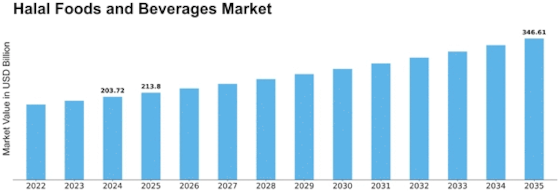

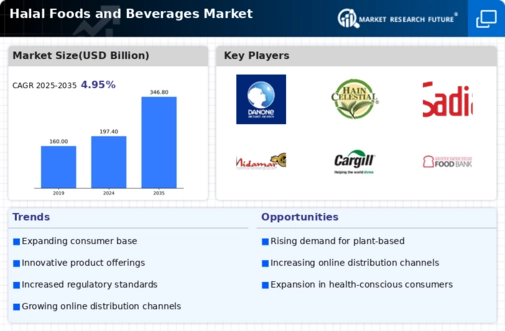
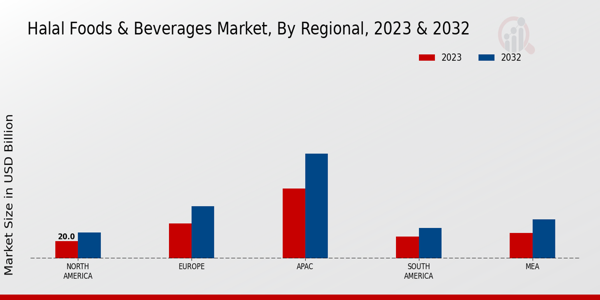
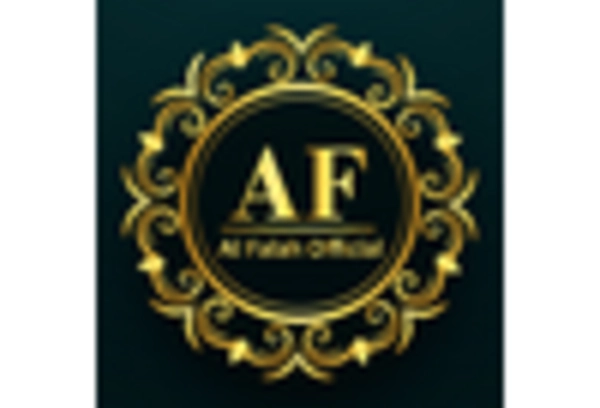
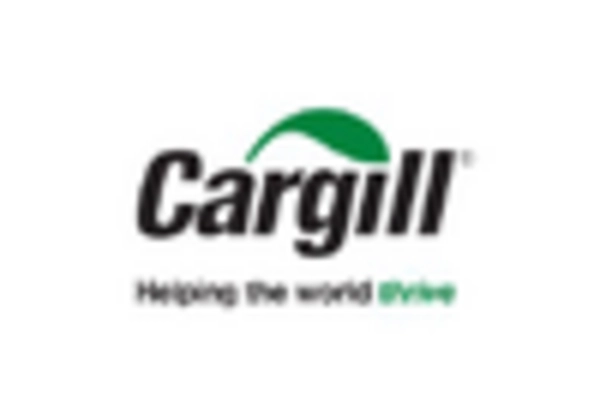
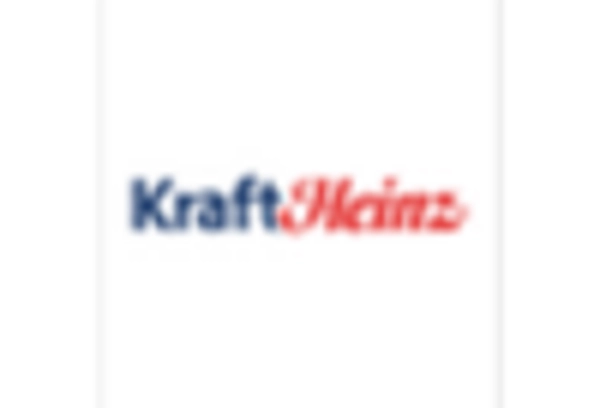
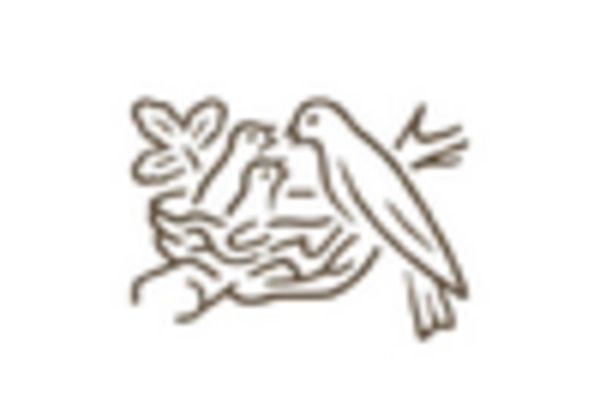
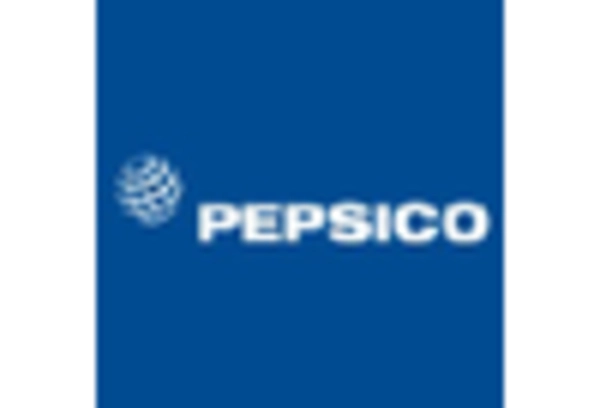
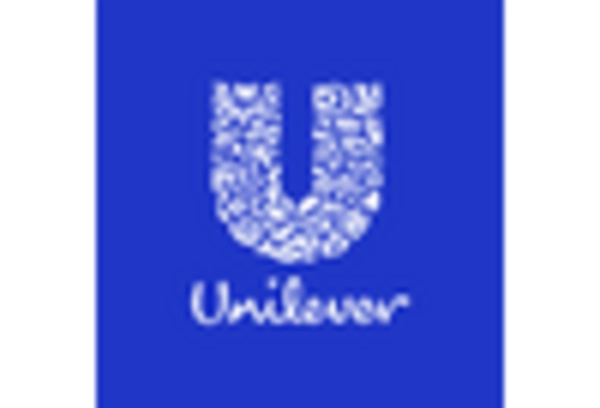

Leave a Comment